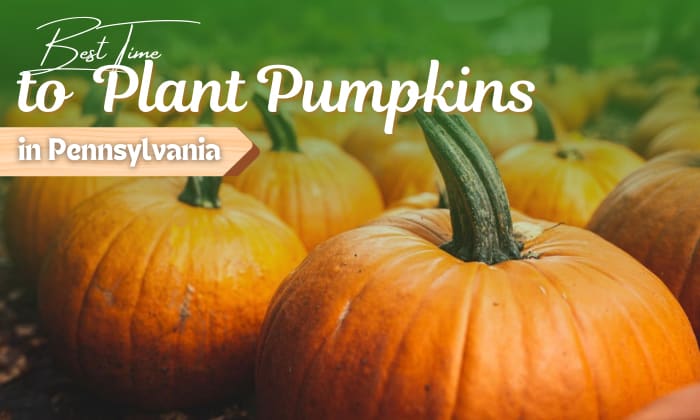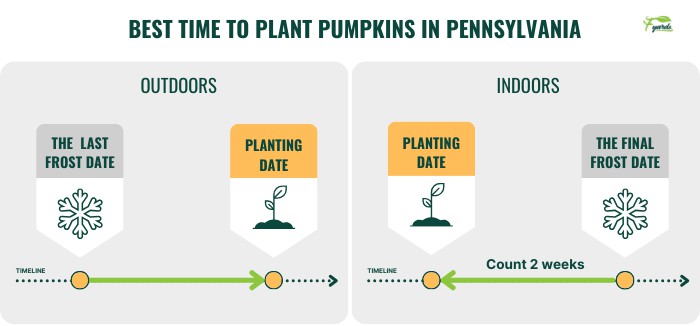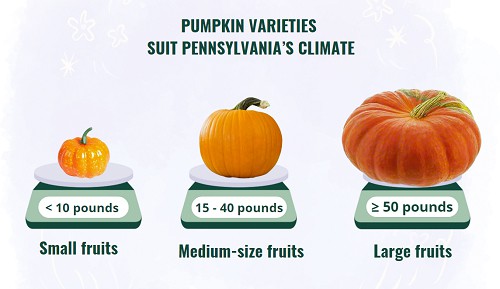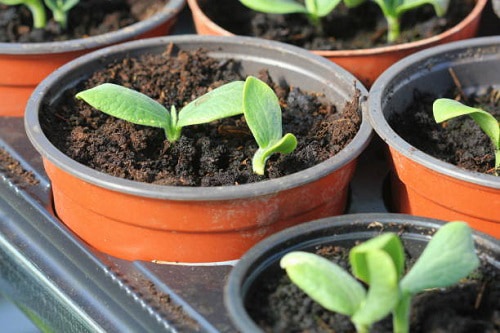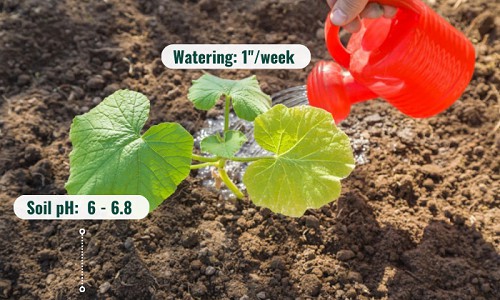Pennsylvania has the highest number of pumpkin farms in the US, with most of the state’s gourds grown for Halloween and sold as decoration.
If you’ve grown tired of making that annual trip to a PA pumpkin patch during October, perhaps you’ve thought of planting some winter squash yourself.
In that case, remember that people often sow pumpkins in PA from May to July, with June 10 to July 6 being the most common gardening dates. Read further below to know when to plant pumpkins in Pennsylvania across different climate zones.
Table of Contents
Best Time to Plant Pumpkins in Pennsylvania
As warm-season crops, pumpkins do not thrive under cold weather and require a minimum temperature of 60℉ to sprout.
- For this reason, it’s essential to seed them after the last frost in spring if you grow them outdoors.
- Gardeners who want to plant their winter squash earlier must start the seeds indoors instead, approximately two weeks before the final frost. The seedlings are ready to go outside once the weather is frost-free and the plants have two to four sets of true leaves.
In this case, you must also use peat pots when growing pumpkins in containers to minimize transplant shock. We also recommend hardening off the seedlings one week before moving them so that they acclimatize to the outdoor environment better.
General guidelines aside, here are the planting dates for different hardiness zones in Pennsylvania if you have trouble narrowing down your gardening time.
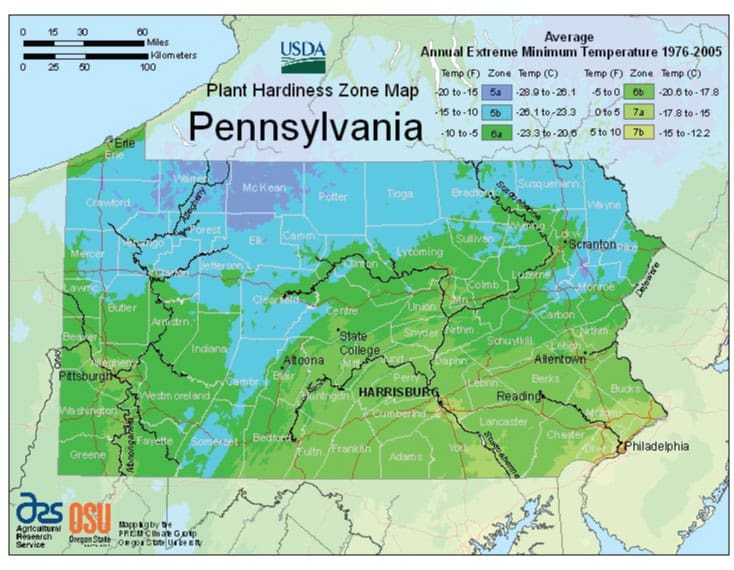
| Hardiness region | Average last frost | Plant indoors | Plant outdoors |
| 5 | May 15 | May 1 | May 16 |
| 6 | May 1 | April 17 | May 2 |
| 7 | April 15 | April 1 | April 16 |
You [/su_table]can also look up the first and last frosts of your locality for more accuracy. Since pumpkins must be harvested before the first frost, count backward 90 to 120 days from your fall freeze estimate—the result will be the final planting date.
| Location | Final frost | First frost |
| Ardmore | April 15 | October 25 |
| Brentwood | April 24 | October 22 |
| Columbia | May 5 | October 5 |
| Pottsville | May 7 | October 16 |
| Pittsburgh | April 30 | October 21 |
Tips for Growing Pumpkins Successfully in Pennsylvania
1. Select pumpkin varieties that suit Pennsylvania’s climate
Below is a list of varieties you can choose from, sorted by fruit weight. For growers who seek out giant pumpkin seeds for competition, the biggest cultivars will be the best choice.
- Small fruits (below 10 pounds in weight)
Munchkin, Rockafellow, Snowball, Hybrid Pam, Apprentice, Ironman
- Medium-size fruits (over 15 and up to 40 pounds)
Magic Lantern, Hannibal, Sorcerer, Gladiator, Solid Gold, Rascal, Apollo, Bunch O’ Warts
- Large fruits (5o pounds and more)
Growers Giant, Prizewinner, Monstar Smash, Atlantic Giant
2. Pay attention to the depth and spacing when planting pumpkins
Plant pumpkin seeds in pots at a depth of one inch. You can put up to three seeds in one container, but ensure to thin them down to one plant when the seedlings develop true leaves.
As for direct-sowing pumpkins outdoors, dig rows eight to twelve feet apart and plant seeds at the depth recommended for containers. Space the seeds five feet apart or opt for a narrower range if your pumpkin vines are shorter, such as a clearance of 30 to 40 inches.
Plants that are too close together may compete for nutrients and fail to produce sizable fruits.
3. Care for pumpkins properly
These gourds need full sun and well-drained, weed-free soil with a pH of 6 to 6.8. Watering pumpkins should be done in the morning, at a rate of one inch of water per week to prevent blossom drops.
As for fertilization requirements, follow the results of your soil test or use a 10-5-5 formula when the plant reaches twelve inches in height.
To encourage blooms, give pumpkins less nitrogen so that they won’t focus their energy on foliar growth. A 5-15-15 or 8-24-24 formula should work in most cases.
When to Harvest Pumpkins?
Given that pumpkins growing season generally extends from May to July in Pennsylvania, you can expect to harvest your gourds within August to October, since they take about three months to grow.
Ripe pumpkins will have firm skin, even coloring, and a dry, shriveled stem. Remove them from the vine by cutting the pumpkins at the stem, all while leaving three to four inches of this section on the fruit.
If you cut the stem off entirely or trim it too short, the fruits will spoil quicker.
Conclusion
Now that you know when to plant pumpkins in Pennsylvania, starting your pumpkin patch for Halloween should be straightforward.
A good time to plant pumpkins in PA is early spring to summer, under warm weather and a temperature of 60 to 95℉. Follow our tips above, and get ready to collect some Jack-o’-lanterns this fall.

Hi, I am William – Floridayards’ digital content creator. My job is to find answers to all your concerns with thorough research and our team’s expert advice. I will also bring you honest reviews on the best products and equipment for raising your beautiful garden. Please look forward to our work!


